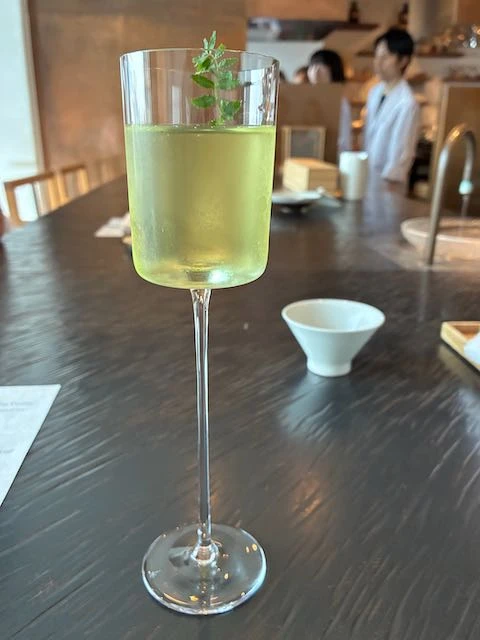How Tea Tasting in Tokyo Inspired a Romance Character
When I created Hypatia Maier, a disillusioned environmentalist, for Love on Belmont 4: Starry Starry Love (publication spring 2026), I needed to find a natural connection to tea. If every character in the Love on Belmont series loved tea at the outset of each novel, I could leave readers with the impression that if you don’t love tea now, you never will.
So, how could I bring tea into this character’s life, when she more likely drank coffee?
Tea in Japan
During my trip to Japan earlier this year, tea topped my shopping list. Japan did not disappoint. I found an Ippodo store, purchased bancha and green tea at the Meiji Shrine, enjoyed a bowl of delicate, sweet matcha at the Hikawa Shrine in Kawagoe, and received flowering teas from my host family.
Even though all that tea tasting made my tastebuds dance, none of it sparked any ideas for the fourth romance novel.
Then, I landed inside the Sakurai Tea Experience in Tokyo, dripping in sweat after having run much of 1.5 km in 30-plus-degree weather. The afternoon began in embarrassment: the subdued tones of the establishment suggested relaxation, not a place to hang out after a workout.
But it became a source of inspiration.
Discovering Tea at the Sakurai Tea Experience
At home, maybe you enjoy a quick cup of tea in the morning. Or do you practise a form of tea ceremony? Experiment with tea in recipes? Or just enjoy re-steeping the same leaves over and over again? I enjoy tea during my early-morning writing sessions and re-steeping tea when I have a few hours suited to the activity, such as when writing this blog post.
(My record for re-steeping was a green tea from Ippodo that lasted a full litre, with each cup tasting as sweetly delicate as the previous one.)
The staff at the Sakurai Tea Experience offer something most tea drinkers don’t have: specialized equipment that prepares tea following precise steps, followed by exquisite morsels of Japanese cuisine to cleanse your palate.
For example, my hostess offered me several teas from which to choose one for hojicha—roasted tea—which they then roasted right there, using a special pan with a funnel for a handle so the host could pour the roasted tea right into the tea pot for steeping.

The Highlight at the Tea Tasting
What fascinated me the most—and eventually became an inspiration for Hypatia—was the green tea offered at the beginning of the taste test.
The staff steeped the same leaves four times:
- For 3 minutes at 35˚C. This highlighted the tea’s strong umami flavour.
- Another 3 minutes at a higher temperature. I unfortunately didn’t catch what it was. The flavour became smoother, but the umami weakened.
- Next, 90 seconds at 70˚C. This steeping produced an astringency I hadn’t noticed yet.
- An iced tea. I believe the leaves were steeped in boiling water this time, but I don’t know for how long. The staff added the thinnest of slivers of orange rind to the brew, which was then poured over ice. A tiny triangle of orange was squeezed to spray its scent around the glass, and a sprig of Japanese peppermint (I believe that’s what it was) was dipped into the tea and then pressed against the side of the glass. The result was a beautifully refreshing, clear-tasting iced tea that bore no resemblance in flavour to the tea from the other three steeps.

Developing a Romance Character From Tea
When creating a character, you need each one to differ from all the others. Love on Belmont centres around Claire’s Tea Shop, even if not every novel is about tea. These were my romantic couples so far:
- Claire and Richard: Claire, whose grandparents were British, was raised on tea. Richard tried tea so he had an excuse to visit her often when she’d just opened up shop in the 1960s.
- Pauline and Todd: Being one of Claire and Richard’s two daughters, Pauline, too, was raised on tea. Todd, though, had to learn about tea to work at Claire’s Tea Shop.
- Tracy and Ben: Tracy and Pauline’s families were best friends. Tracy always enjoyed tea as a comfort drink, but it never played the central role for her that it did for Pauline. Ben, on the other hand, only entered Claire’s Tea Shop in his early days of being in the series by sheer necessity.
My thoughts generally followed this logic: Hypatia, a coffee drinker, moves to Belmont Village, where she meets new friends. If tea is new to her, how does her experience with tea differ from that of the others?
It eventually clicked: even if Hypatia has become disillusioned with environmental protection, she’ll still focus on an aspect of her former career that she loves. As a hydrologist, the effects of water on tea could become that focus.
Finding Ideas for Novels
Perhaps the most important quality a writer can have is the desire to learn. The more you learn and the more experiences you create for yourself, the more varied your characters will become.
I’ve always understood that water temperature affects tea. Anyone who’s steeped loose-leaf green tea in boiling water will know what I’m talking about. However, it had never occurred to me that adjusting water temperature while steeping same tea leaves could become an interesting pastime for a disillusioned hydrologist.
So, not only did a tea tasting in Tokyo expand my knowledge of tea, it helped me refine one of my romantic leads in the next instalment of Love on Belmont.










